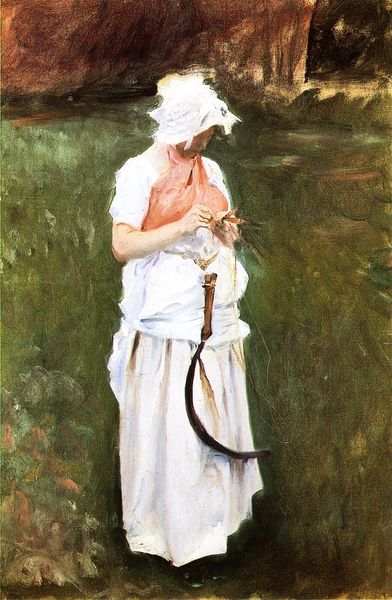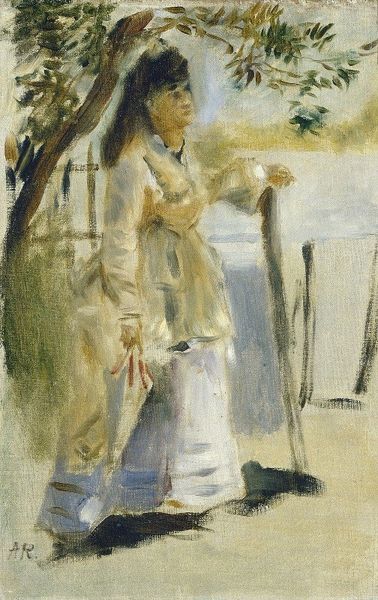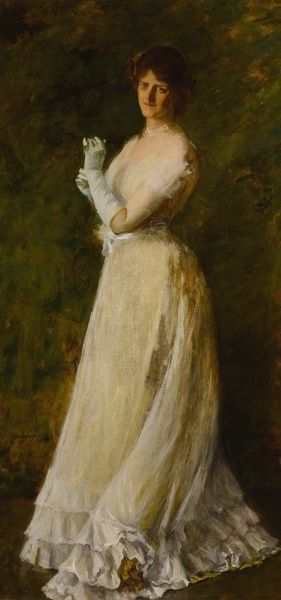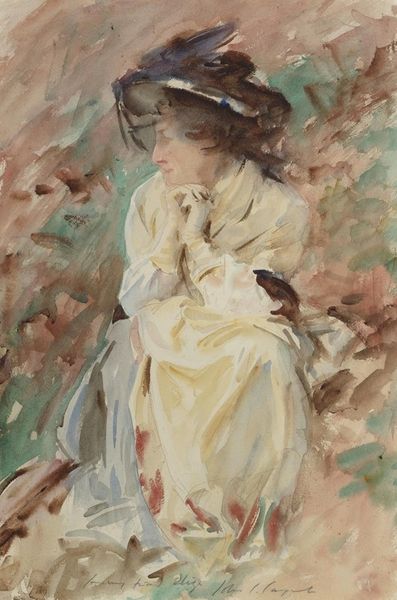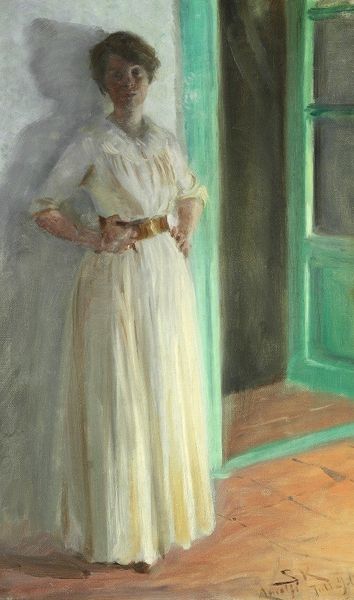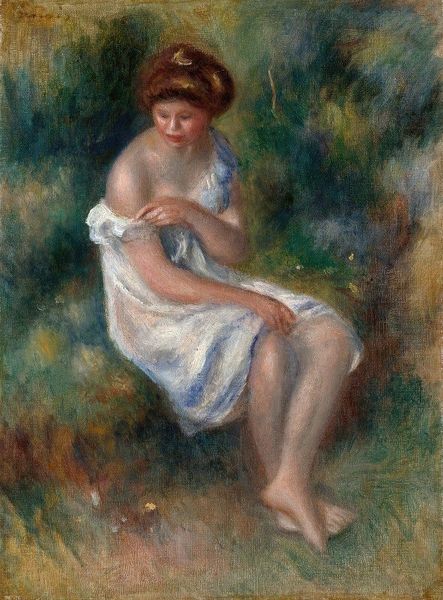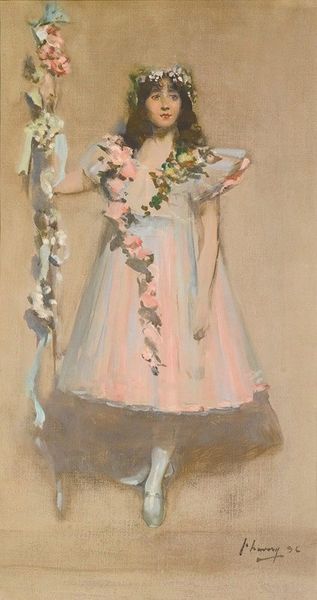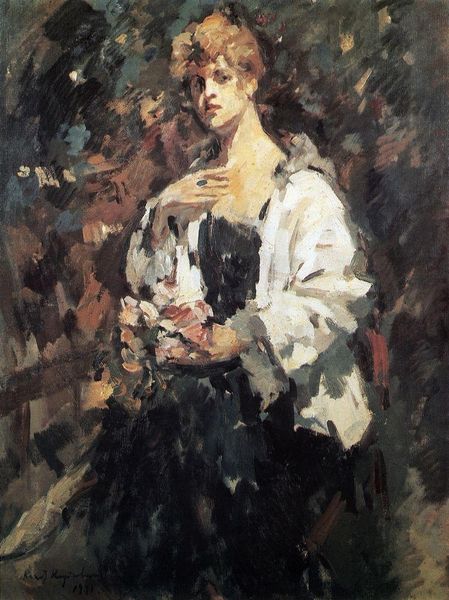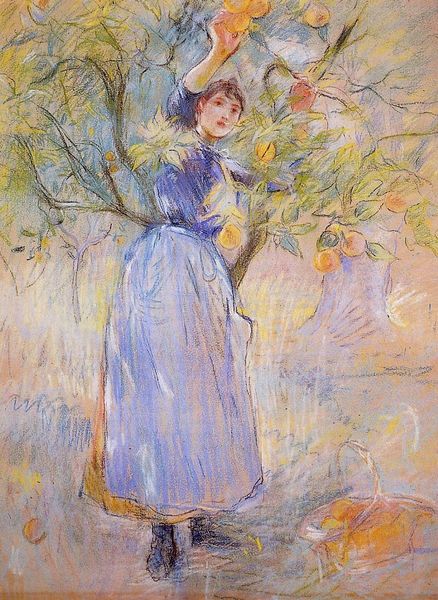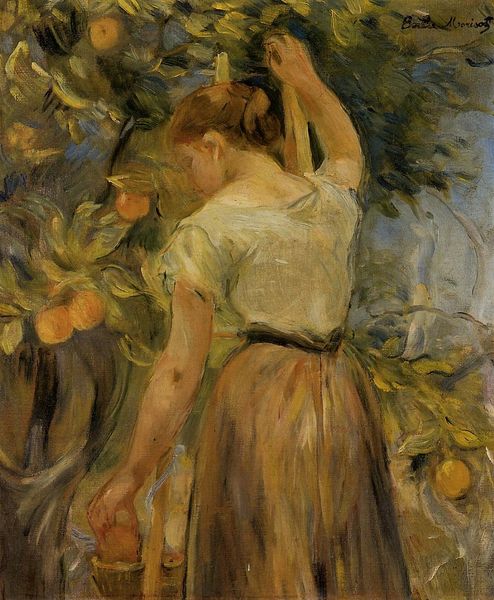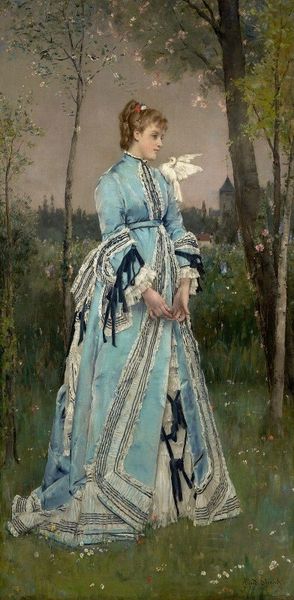
Copyright: Public Domain: Artvee
Curator: Here we have Pierre-Auguste Renoir’s “Woman in a Park,” painted in 1866. He's captured a figure en plein air, really embracing that early Impressionist style. Editor: Immediately, I see a figure draped in white. It feels dreamlike, almost spectral, as if she is emerging from or dissolving into the landscape. The hazy brushstrokes contribute to a sense of transience. Curator: Yes, and it's important to remember the rapidly changing social landscape of 19th-century Paris. This image presents an interesting contrast to the idealized, often overtly sexualized portrayals of women common at the time. We see her in a public space, yet somewhat removed and contemplative. What does her body language tell us about women in the Impressionist Era? Is this a modern, urban woman navigating this changing world? Editor: The way the light drapes across her figure and softens her features feels reminiscent of classical representations of purity or even mourning, though perhaps repurposed for a secular context. The woman almost blends with the greens and yellows of the park behind her. The slight head tilt and the suggestion of a shadow across her eyes evoke a quiet sadness, like a veiled symbolic reference to isolation amidst modernity. Curator: Absolutely, and while seemingly straightforward, the work resonates with deeper cultural currents. Renoir is actively challenging the artistic conventions, both through technique and subject. By situating this woman within this public space, he acknowledges the societal constraints and the shifting roles of women within them. It begs the question: is she enjoying the newfound freedoms of the urban environment or experiencing a quiet solitude? Editor: And the color white itself carries a symbolic weight, historically associated with innocence but also with aristocracy. Does it suggest a social positioning or something more psychological, like a self-imposed boundary or detachment? These impressionistic hints and suggestive strokes leave room for many answers. Curator: It is precisely this ambiguity and the lack of a definitive answer that render this seemingly simple image so complex and rich for discussion. The painting embodies an ongoing negotiation of identity, class, and gender within the Impressionist movement and 19th century France. Editor: Yes, there’s something timeless in its ambiguity, something that transcends the particular era and continues to speak to us today.
Comments
No comments
Be the first to comment and join the conversation on the ultimate creative platform.
